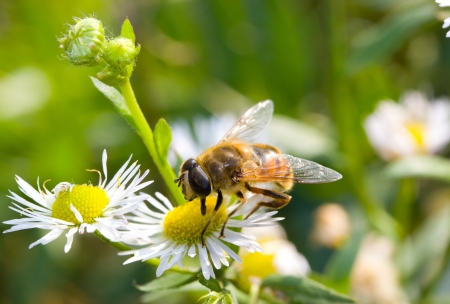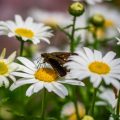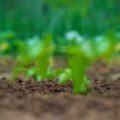1. Introduction to Pollinators and Native Plants
Pollinators like bees, butterflies, hummingbirds, and even some beetles play a crucial role in the health of ecosystems across the United States. These hardworking creatures help plants reproduce by moving pollen from one flower to another. Without them, many of the fruits, vegetables, and flowers we enjoy wouldnt exist. But pollinators are facing serious threats—including habitat loss, pesticide exposure, and climate change.
This is where native plants come in. Native plants are species that have naturally evolved in a specific region over thousands of years. Because they’re adapted to local soils, climates, and wildlife, they provide the ideal food and shelter for regional pollinators. Unlike non-native or ornamental plants, native species often produce nectar and pollen that meet the nutritional needs of local pollinator populations.
Using native plants in your garden or landscape doesn’t just support biodiversity—it also helps create a sustainable environment that requires less water, fertilizer, and maintenance. Whether you live in the Northeast, Southeast, Midwest, Southwest, Northwest, or West Coast, there are native plant options suited for your area’s unique climate and pollinator species.
Benefits of Native Plants for Pollinators
| Benefit | Description |
|---|---|
| Nutrient-Rich Nectar & Pollen | Native flowers offer essential nutrients tailored to local pollinators’ needs. |
| Synchronized Bloom Times | The blooming periods of native plants align with local pollinators’ life cycles. |
| Habitat & Shelter | Provide nesting sites and protection for bees, butterflies, and birds. |
| Disease & Pest Resistance | Evolved to resist common pests and diseases without heavy chemical use. |
No matter where you live in the U.S., choosing native plants is one of the most effective ways to help pollinators thrive. In the sections ahead, we’ll explore top native plant choices for each major region of the country so you can start building a pollinator-friendly space right at home.
2. Northeast Region Favorites
The Northeastern United States, including states like New York, Pennsylvania, and Massachusetts, is known for its cooler, temperate climate. This region offers a unique environment where native plants play a vital role in supporting local pollinators such as bees, butterflies, and hummingbirds. By choosing the right native species, gardeners can create thriving habitats that bloom from spring through fall.
Top Native Plants for Pollinators in the Northeast
Below are some excellent native plant options that attract pollinators and thrive in the Northeast’s seasonal climate:
| Plant Name | Pollinators Attracted | Bloom Time | Growing Conditions |
|---|---|---|---|
| New England Aster (Symphyotrichum novae-angliae) | Bees, Butterflies | Late Summer to Fall | Full Sun, Moist Soil |
| Bee Balm (Monarda didyma) | Bees, Hummingbirds | Mid to Late Summer | Full Sun to Partial Shade, Moist Soil |
| Wild Bergamot (Monarda fistulosa) | Bees, Butterflies | Summer | Full Sun to Partial Shade, Well-drained Soil |
| Joe-Pye Weed (Eutrochium purpureum) | Butterflies, Bees | Mid to Late Summer | Partial Shade, Moist Soil |
| Purple Coneflower (Echinacea purpurea) | Bees, Butterflies | Summer to Early Fall | Full Sun, Well-drained Soil |
Why Choose Native Plants?
Native plants are adapted to local weather and soil conditions. This means they typically require less water and maintenance than non-native species. Plus, they provide essential nectar and pollen for regional pollinators that rely on them throughout their life cycles.
Tips for Planting in the Northeast:
- Diverse Bloom Times: Select plants with staggered bloom periods to support pollinators all season long.
- Avoid Pesticides: Many chemicals harm beneficial insects. Opt for natural pest control methods.
- Create Clusters: Plant flowers in groups rather than scattered—this makes it easier for pollinators to find them.
- Add Native Shrubs and Trees: Species like serviceberry and dogwood also offer food sources and shelter.
Selecting the right mix of native plants can turn any backyard or garden into a pollinator paradise—even in the chillier climates of the Northeast.
![]()
3. Southeast Region Picks
The Southeast is known for its warm climate, high humidity, and long growing season. Native plants in this region must not only withstand heat but also attract pollinators like bees, butterflies, and hummingbirds. States like Georgia, Florida, and the Carolinas are rich with native flora that support local ecosystems while bringing beauty to gardens.
Top Native Plants for the Southeast
Here are some standout native plants that thrive in the Southeast’s unique conditions and are beloved by pollinators:
| Plant Name | Pollinators Attracted | Bloom Time | Growing Conditions |
|---|---|---|---|
| Black-eyed Susan (Rudbeckia hirta) | Bees, butterflies | Summer to fall | Full sun, well-drained soil |
| Coral Honeysuckle (Lonicera sempervirens) | Hummingbirds, bees | Spring to summer | Full sun to partial shade, moist soil |
| Scarlet Sage (Salvia coccinea) | Hummingbirds, bees, butterflies | Late spring to frost | Full sun, tolerates humidity well |
| Purple Coneflower (Echinacea purpurea) | Bees, butterflies | Summer | Full sun to partial shade, drought-tolerant once established |
| Buttonbush (Cephalanthus occidentalis) | Bees, butterflies, hummingbirds | Mid to late summer | Moist to wet soils, full sun to partial shade |
Southeast Gardening Tips for Pollinators
- Select a mix of bloom times: Ensure a continuous food source from spring through fall.
- Avoid pesticides: Many chemicals harm beneficial insects; opt for organic methods when possible.
- Add water sources: A shallow dish with stones can provide drinking spots for pollinators.
- Create shelter: Leave some natural debris or plant dense shrubs where pollinators can rest.
Add these native beauties to your garden and you’ll not only enjoy vibrant flowers but also help sustain essential pollinator populations in your area.
4. Midwest Regional Highlights
The Midwest is home to a variety of native plants that not only thrive in the region’s changing climate but also support pollinators like monarch butterflies, bumblebees, and solitary native bees. States like Illinois, Michigan, and Ohio often face dry summers, making drought-tolerant native plants an ideal choice for sustainable landscaping and pollinator habitats.
Why Choose Drought-Tolerant Native Plants?
Drought-tolerant plants require less watering once established, making them both eco-friendly and cost-effective. These plants have evolved with local pollinators, offering essential nectar and pollen sources throughout the growing season. Theyre perfect for gardeners looking to attract pollinators while conserving water.
Top Native Pollinator Plants for the Midwest
| Plant Name | Pollinators Attracted | Bloom Time | Growing Conditions |
|---|---|---|---|
| Purple Coneflower (Echinacea purpurea) | Bees, Butterflies | Mid to Late Summer | Full Sun, Well-Drained Soil |
| Wild Bergamot (Monarda fistulosa) | Bumblebees, Hummingbirds | Mid Summer | Sun to Part Shade, Dry to Medium Soil |
| Butterfly Milkweed (Asclepias tuberosa) | Monarchs, Bees | Early to Mid Summer | Full Sun, Dry Soil |
| Black-Eyed Susan (Rudbeckia hirta) | Bees, Butterflies | Summer to Fall | Full Sun, Average Soil |
| Prairie Blazing Star (Liatris pycnostachya) | Butterflies, Native Bees | Mid to Late Summer | Full Sun, Moist to Dry Soil |
Tips for Gardening with Native Plants in the Midwest
- Start Small: Begin with a few well-chosen species that match your soil and sunlight conditions.
- Avoid Pesticides: Chemicals can harm beneficial pollinators—opt for organic methods instead.
- Create Diversity: Mix flowers that bloom at different times to offer continuous food sources.
- Add Host Plants: Include species like milkweed for monarch caterpillars in addition to nectar plants.
- Leave Some Wild Areas: Ground-nesting bees need undisturbed patches of bare soil or leaf litter.
The Monarch Butterfly Connection
The Midwest plays a crucial role in the monarch butterfly migration path. Including native milkweeds like Butterfly Milkweed (Asclepias tuberosa) not only attracts adult monarchs but also supports their entire life cycle by providing a place for eggs and food for caterpillars. Planting milkweed is one of the most impactful ways Midwestern gardeners can help this iconic species recover.
Your Backyard Can Make a Difference!
No matter how big or small your space is—whether it’s a city balcony or a suburban yard—you can create a welcoming spot for pollinators with these resilient native plants. By choosing species adapted to your region’s conditions, youre helping build healthier ecosystems across the Midwest.
5. Western Region Standouts
The Western United States is home to a wide range of climates—from the coastal fog of California to the high-altitude conditions in Colorado and the temperate rainforests of Washington. This diversity makes it essential to choose native plants that are well-suited for local conditions while supporting pollinators like bees, butterflies, and hummingbirds.
California
California’s Mediterranean climate supports a variety of drought-tolerant native plants that pollinators love. These plants thrive with minimal water and provide long blooming seasons.
| Plant Name | Pollinators Attracted | Best Growing Conditions |
|---|---|---|
| California Poppy (Eschscholzia californica) | Bees, Butterflies | Full Sun, Well-drained Soil |
| Cleveland Sage (Salvia clevelandii) | Bees, Hummingbirds | Dry Soil, Full Sun |
| Manzanita (Arctostaphylos spp.) | Native Bees, Hummingbirds | Sandy or Rocky Soil, Partial to Full Sun |
Colorado
With its mountainous terrain and variable climate, Colorado benefits from hardy native plants that can withstand cold winters and hot summers while still drawing pollinators.
| Plant Name | Pollinators Attracted | Best Growing Conditions |
|---|---|---|
| Rocky Mountain Bee Plant (Cleome serrulata) | Bees, Butterflies | Full Sun, Dry to Medium Soil |
| Purple Coneflower (Echinacea angustifolia) | Bees, Butterflies | Full Sun, Well-drained Soil |
| Blanket Flower (Gaillardia aristata) | Bees, Butterflies | Sandy or Loamy Soil, Full Sun |
Washington
The Pacific Northwests mild temperatures and consistent rainfall support lush vegetation. Native plants here tend to favor moist soil and partial shade but still attract a variety of pollinators.
| Plant Name | Pollinators Attracted | Best Growing Conditions |
|---|---|---|
| Red Columbine (Aquilegia formosa) | Hummingbirds, Bees | Partial Shade, Moist Soil |
| Nootka Rose (Rosa nutkana) | Mason Bees, Butterflies | Moist to Wet Soil, Full Sun to Part Shade |
| Sitka Aster (Symphyotrichum sitchense) | Butterflies, Native Bees | Damp Meadows, Partial Sun |
Tips for Success in the West:
- Select plants based on your microclimate—coastal areas differ greatly from inland zones.
- Avoid overwatering drought-tolerant species; many prefer dry roots once established.
- Diversify bloom times by planting early-, mid-, and late-season varieties to support pollinators year-round.
By choosing regionally appropriate native plants, you not only create a thriving garden but also provide vital habitat for local pollinator species across the West.
6. Tips for Planting and Pollinator Support
Creating a pollinator-friendly garden with native plants is easier than you might think. With the right planning and care, your yard can become a haven for bees, butterflies, hummingbirds, and other essential pollinators. Here are some practical tips tailored to different U.S. regions to help you get started.
Choose Regionally Native Plants
Selecting plants that are native to your specific region ensures they thrive in your climate and soil conditions—and local pollinators already recognize them as food sources. Use local extension services or native plant societies to find accurate regional plant lists.
Plant Diversity Matters
To support a wide variety of pollinators, plant species with different bloom times and flower shapes. This provides continuous food from early spring through late fall.
| Region | Early Bloomers | Mid-Season | Late Bloomers |
|---|---|---|---|
| Northeast | Bloodroot, Wild Columbine | Bee Balm, Black-eyed Susan | New England Aster, Goldenrod |
| Southeast | Coral Honeysuckle, Eastern Redbud | Butterfly Weed, Coreopsis | Aromatic Aster, Ironweed |
| Midwest | Pussy Willow, Prairie Smoke | Purple Coneflower, Wild Bergamot | Sneezeweed, Blazing Star |
| Southwest | Desert Marigold, Penstemon | Milkweed, Blanketflower | Zinnia grandiflora, Goldeneye |
| Pacific Northwest | Oregon Grape, Trillium | Lupine, Camas Lily | Aster subspicatus, Douglas Aster |
| California | California Poppy, Ceanothus | Coyote Mint, Yarrow | Tidy Tips, Goldenrod (Solidago spp.) |
| Mountain West | Biscuitroot, Glacier Lily | Lupine, Indian Paintbrush | Aster laevis, Rabbitbrush |
| Alaska & Hawaii* | Labrador Tea (AK), ʻŌhiʻa Lehua (HI) | Nootka Lupine (AK), Ilima (HI) | Fireweed (AK), Maui Nehe (HI) |
Create Layered Plantings for Shelter and Food Sources
Pollinators need more than just nectar—they also need shelter. Include a mix of groundcovers, shrubs, and flowering trees to provide protection from weather and predators. Leave bare patches of soil for ground-nesting bees.
Avoid Pesticides and Herbicides
Chemicals can harm beneficial insects. Instead of spraying pesticides or herbicides, use integrated pest management (IPM) techniques like hand-removal of pests or companion planting to naturally deter unwanted bugs.
Add Water Sources and Nesting Areas
- Water: A shallow dish with pebbles filled with water gives pollinators a safe place to drink.
- Nesting: Install bee hotels or leave standing dead wood for solitary bees and beetles.
Seasonal Care Tips by Region:
| Seasonal Task | Northern Regions (e.g., Midwest/Northeast) | Southern Regions (e.g., Southeast/Southwest) |
|---|---|---|
| Spring Prep | Clean up leaf litter gradually to avoid disturbing overwintering insects; start sowing hardy natives. | Add mulch before heat sets in; begin watering schedule earlier due to warmer temps. |
| Summer Care | Irrigate during dry spells; deadhead blooms to encourage more flowers. | Irrigate deeply but less frequently; trim back overgrown perennials as needed. |
| Fall Prep | Avoid cutting back all plants—leave seed heads for birds & insects; plant fall bloomers. | Add compost; plant winter cover crops or natives adapted to mild winters. |
Create Connectivity in Urban Spaces
If youre gardening in an urban or suburban setting, aim to connect your yard with nearby green spaces. Even small patches of native plants can create important corridors for pollinators moving across developed areas.


